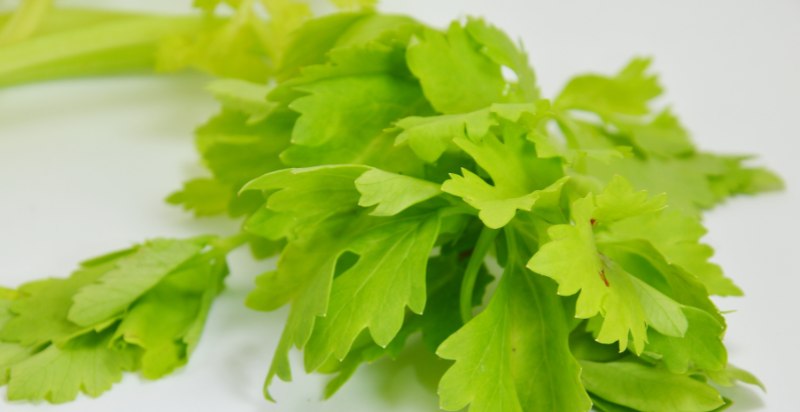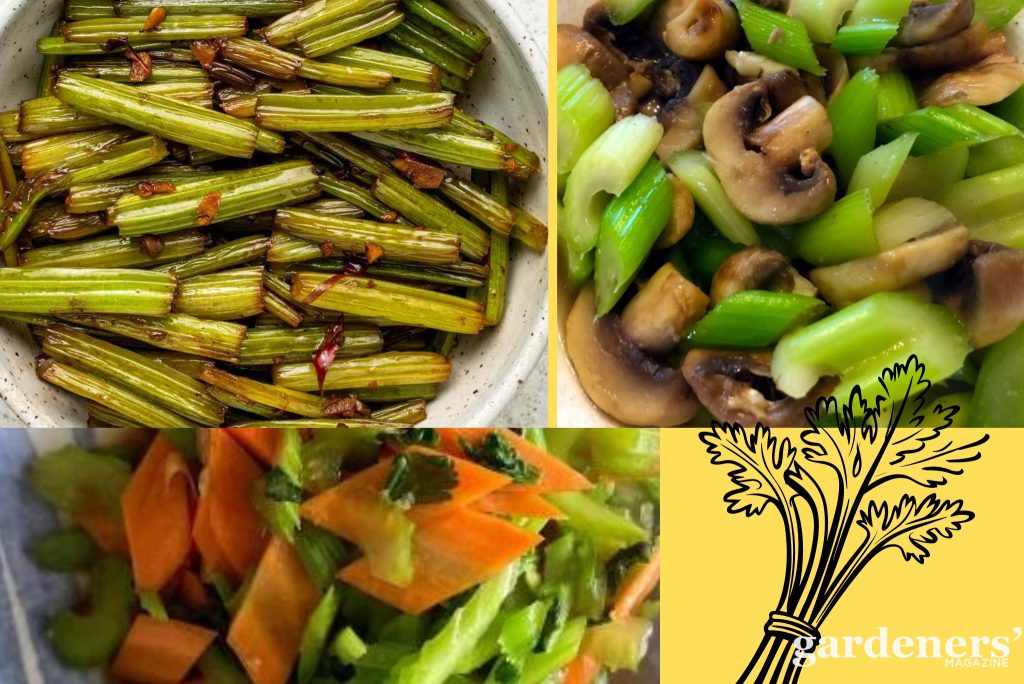Welcome to the fascinating realm of gardening, where every plant tells a story of its own. Today, we delve into the intriguing world of Chinese celery. With its slender stalks and distinctive aroma, Chinese celery stands out as a unique addition to any garden. Often overshadowed by its Western counterpart, this lesser-known variety boasts a rich history and a multitude of culinary and medicinal uses.
As we explore the depths of Chinese celery, we uncover its origins and the cultural significance it holds in Asian cuisine. From its botanical characteristics to the intricacies of cultivation, we delve into the nuances of growing Chinese celery with precision and care. Join us on this exploration as we unravel the secrets of Chinese celery and unlock its potential in your garden.

Chinese Celery: An Overview
Let us learn about the botanical background, flavor profile, history and origin of Chinese celery here.
Botanical Background
The botanical background of Chinese celery, scientifically known as Apium graveolens var. secalinum, distinguishes it from its Western counterpart, Apium graveolens var. dulce. Chinese celery is characterized by its slender stalks, aromatic leaves, and strong flavor profile. Unlike traditional celery, which is grown for its thick, succulent stalks, Chinese celery is cultivated for its crisp and slender stems and flavorful foliage.
Chinese celery belongs to the Apiaceae family, which includes other well-known herbs such as parsley, cilantro, and dill. It typically grows in compact bunches, with multiple stems emerging from a central base. The plant’s leaves are finely divided and emit a distinctive aroma when crushed, adding depth and complexity to dishes.
From a botanical standpoint, Chinese celery is similar to its Western counterpart, but its unique flavor and appearance set it apart. Understanding its botanical background can help gardeners and cooks appreciate its distinct qualities and culinary potential.
History and Origin of Chinese Celery
The history and origin of Chinese celery can be traced back to East Asia, particularly China, where it has been cultivated for centuries. It is believed to have originated in China’s Sichuan region, renowned for its rich agricultural heritage. Chinese celery has a long history of culinary use in Asian cuisine, where its strong flavor and aromatic qualities are prized. Over time, it spread to other parts of Asia and eventually to Europe and North America, gaining popularity for its unique taste and culinary versatility. Today, Chinese celery continues to be cherished as a beloved ingredient in diverse cuisines around the world, reflecting its rich history and cultural significance.
Flavor Profile
Chinese celery, also known as cutting celery, brings a bold and distinctive flavor to the table that’s sure to tantalize your taste buds! Unlike its Western cousin, it packs a punch with its robust taste, offering a delightful blend of bitterness and herbaceous notes. With its crisp stalks and fragrant leaves, Chinese celery adds a pop of freshness to any dish. Whether you’re stir-frying, tossing it in a salad, or simmering it in a soup, this versatile veggie is bound to elevate your culinary creations to new heights! So why not give it a try and add a touch of Asian-inspired flair to your next meal?
Growing Chinese Celery from Seeds for Home Gardeners
Growing Chinese celery from seeds is a rewarding experience for home gardeners looking to add a unique flavor to their culinary endeavors. Here’s a step-by-step guide to help you get started:
- Seed Selection: Begin by selecting high-quality Chinese celery seeds from a reputable supplier. Look for seeds that are fresh and free from damage or disease.
- Timing: Chinese celery thrives in cooler temperatures and is best planted in early spring or late summer. Choose a planting time that corresponds with your local climate and growing season.
- Soil Preparation: Prepare a well-draining and fertile soil bed for your Chinese celery seeds. Amend the soil with compost or aged manure to improve its texture and nutrient content.
- Sowing Seeds: Sow Chinese celery seeds directly into the soil at a depth of about 1/4 inch. Space the seeds approximately 6 inches apart in rows that are 12 inches apart.
- Watering: Keep the soil consistently moist but not waterlogged. Water the seeds gently after planting and continue to water regularly throughout the growing season, especially during dry periods.
- Sunlight: Chinese celery thrives in full sun to partial shade. Ensure that your plants receive at least 6-8 hours of sunlight per day for optimal growth.
- Thinning: Once the seedlings emerge, thin them out to ensure proper spacing. Leave the healthiest and strongest seedlings, removing any weaker ones to allow the remaining plants room to grow.
- Maintenance: Monitor for pests and diseases and take appropriate measures to protect your plants if necessary. Additionally, provides support for taller varieties to prevent them from bending or breaking.
Regular watering and occasional feeding with a balanced fertilizer will support robust development. Harvest the stalks when they reach 6-8 inches in height, cutting them at ground level and leaving the inner stalks to continue growing.
With care and attention, you’ll soon enjoy the delicious flavor of homegrown Chinese celery in your culinary creations.

Nutritional Benefits
Chinese celery boasts an array of nutritional benefits, enriching diets with essential vitamins, minerals, and antioxidants. Rich in vitamins A, C, and K, it aids in maintaining healthy vision, bolstering immunity, and promoting blood clotting. The herb’s potassium, calcium, and magnesium content contributes to bone strength, muscle function, and nerve health.
Chinese celery’s dietary fiber supports digestion and gut health, while antioxidants like flavonoids combat free radicals, reducing inflammation and disease risk. With its high water content and low-calorie count, Chinese celery aids in hydration and weight management.
Integrating Chinese celery into meals adds a nutritious touch, enhancing overall health and well-being.

Culinary Uses
Chinese celery, prized for its robust flavor and crisp texture, is a versatile herb used in various culinary applications. Its unique flavor enhances the richness of dishes, making it a favored component in Asian culinary traditions. Here are several typical ways Chinese celery is employed in cooking:
- Stir-fries: Chinese celery lends a savory note to stir-fried dishes, complementing other ingredients such as meats, tofu, and vegetables. The vibrant colors and mild sweetness of bell peppers complement the earthy taste of Chinese celery in stir-fries, soups, or salads.
- Soups and stews: Chinese celery’s aromatic flavor enhances the taste of soups and stews, infusing them with a subtle herbal essence. Add chopped Chinese celery to broth-based soups or hearty stews for extra flavor and nutrition.
- Salads: Chinese celery can be used raw in salads, adding a refreshing crunch and mild celery flavor. Combine it with other salad greens, fruits, nuts, and dressing for a delightful salad experience. The sweetness of apples contrasts with the savory flavor of Chinese celery, creating a balanced flavor profile in salads or slaws.
- Marinades and sauces: Chinese celery can be finely chopped and incorporated into marinades or sauces for meats, seafood, or tofu. The citrusy tang of oranges adds brightness to dishes containing Chinese celery, such as salads or marinades.
- Garnish: Use Chinese celery leaves as a garnish to add a pop of color and flavor to finished dishes. Sprinkle chopped leaves over noodle dishes, rice bowls, or savory snacks for a finishing touch.
- Pickling: Chinese celery can be pickled to preserve its flavor and texture. It adds tanginess and crunch to sandwiches, wraps, or as a side dish. Cucumbers share a similar crisp texture with Chinese celery, making them ideal companions in salads, pickles, or cold appetizers.
- Dips and spreads: Blend Chinese celery into dips and spreads for a unique twist. Combine chopped celery with Greek yogurt, garlic, and herbs for a delicious veggie dip.
- Noodles and rice dishes: Add chopped Chinese celery to noodles and rice dishes for added texture and flavor. It pairs well with Asian-inspired flavors like soy sauce, ginger, and sesame oil.
- Vegetable medleys: Chinese celery can be sautéed with other vegetables to create flavorful side dishes. Try combining it with bell peppers, onions, and mushrooms for a tasty vegetable medley.
- Stuffed vegetables: Use Chinese celery as a stuffing for vegetables like bell peppers or mushrooms. Combine chopped celery with breadcrumbs, herbs, and cheese for a delicious filling.

Whether cooked or raw, Chinese celery adds depth and dimension to a wide range of culinary creations, making it a versatile and indispensable kitchen herb.
Where to Buy Chinese Celery
Chinese celery is commonly available for purchase in a variety of locations, catering to different preferences and accessibility. Asian grocery stores typically stock this ingredient due to its significance in Asian cuisine. These stores offer an extensive range of fresh produce, including Chinese celery.
Farmers’ markets also serve as a prime location to procure Chinese celery, showcasing a diverse array of locally sourced fruits, vegetables, and herbs. Some larger supermarkets may also carry Chinese celery in their produce sections, particularly in areas with multicultural demographics.
For those preferring online shopping, certain grocery delivery services or specialty food retailers may offer Chinese celery in their inventory. Additionally, community-supported agriculture (CSA) programs present an alternative option, providing subscribers with regular shipments of fresh, locally sourced produce, including Chinese celery, during its growing season.
Whether purchased from physical stores or online platforms, selecting Chinese celery with firm stalks and vibrant green leaves ensures optimal quality and flavor.
Substitutes
When Chinese celery isn’t available, several substitutes can fill its culinary role without compromising flavor. Regular celery, though milder, can be used by increasing the quantity to match the intensity of Chinese celery. Parsley, with its similar herbaceous notes, serves as a great alternative, especially in soups and stews. For a closer match in Asian dishes, try using cilantro or bok choy stems, which offer a comparable crunch and zest. Leafy greens like Swiss chard or spinach can also mimic the texture, though they may lack the distinctive peppery taste. Experimenting with these substitutes ensures your dishes retain their vibrant flavors and textures.
Comparisons with Other Vegetables
Navigating the world of leafy greens can sometimes be confusing, especially when it comes to distinguishing between similar vegetables like Chinese celery, celery cabbage, and common celery. Here’s a breakdown to clarify these differences and explore the culinary potential of Chinese celery, including its less commonly used parts like the root.
Chinese Celery vs. Celery Cabbage: While both are staples in Asian cuisine, Chinese celery (Apium graveolens var. secalinum) is known for its thin stalks and potent flavor, whereas celery cabbage, also known as Napa cabbage (Brassica rapa subsp. pekinensis), is a type of Chinese cabbage with crinkly leaves and a milder taste. They serve different roles in cooking, with Chinese celery often used as an aromatic herb and celery cabbage as a crunchy, sweet addition to salads and stir-fries.
Chinese Celery Root: Unlike the more commonly used stalks and leaves, the root of Chinese celery is not typically found in recipes. However, it can be used similarly to parsley root, offering a unique, earthy flavor to soups and stews when available.
Chinese Celery vs. Celery: Compared to the common celery (Apium graveolens var. dulce), Chinese celery has a stronger, more herbaceous flavor and thinner stalks. It’s preferred in Asian dishes for its ability to impart a bold taste even in small amounts, contrasting with the common celery’s milder flavor and crunchier texture used in Western cooking.
Conclusion
This aromatic herb is not just a culinary delight but also packed with nutritional goodness, making it a worthy addition to your diet. Whether you’re experimenting with new recipes or adding a twist to traditional dishes, Chinese celery promises to elevate your cooking with its distinctive taste. We’d love to hear from you! Share your own experiences, favorite recipes, or creative ways you’ve incorporated Chinese celery into your meals.
Frequently Asked Questions
What’s the difference between Chinese celery and normal celery?
Chinese celery has thinner stalks, a stronger flavor, and more aromatic leaves than regular celery, which has thicker stalks.
Can Chinese celery be eaten raw?
Yes, Chinese celery can be eaten raw. Its tender stalks and flavorful leaves are commonly used in salads and garnishes.
- Everything You Wanted to Know About Red Tamarillos - June 2, 2025
- A Guide to Tulips: Everything You Need to Know & More… - June 2, 2025
- Guanabana: Description, Flavor, Benefits, And Uses - May 27, 2025

4 thoughts on “Chinese Celery: Flavor, Benefits, And Uses ”
Comments are closed.